The culture of India is the way of living of the people of India. India's languages, religions, dance, music, architecture, food, and customs differ from place to place within the country. The Indian culture, often labeled as an amalgamation of several cultures, spans across the Indian subcontinent and has been influenced by a history that is several millennia old. Many elements of India's diverse cultures, such as Indian religions, Indian philosophy and Indian cuisine, have had a profound impact across the world.
Culture
India is one of the world's oldest civilizations. The Indian culture, often labeled as an amalgamation of several various cultures, spans across the Indian subcontinent and has been influenced and shaped by a history that is several thousand years old. Throughout the history of India, Indian culture has been heavily influenced by Dharmic religions. They have been credited with shaping much of Indian philosophy, literature, architecture, art and music. Greater India was the historical extent of Indian culture beyond theIndian subcontinent. This particularly concerns the spread of Hinduism, Buddhism, architecture, administration and writing system from India to other parts of Asia through theSilk Road by the travellers and maritime traders during the early centuries of the Common Era. To the west, Greater India overlaps with Greater Persia in the Hindu Kush andPamir Mountains. During medieval period, Islam played significant role in shaping Indian cultural heritage. Over the centuries, there has been significant integration ofHindus, Jains, and Sikhs with Muslim culture across India
India is the birthplace of Hinduism, Buddhism, Jainism and Sikhism, collectively known as Indian religions. Indian religions are a major form of world religions along with Abrahamic ones. Today, Hinduism and Buddhism are the world's third and fourth-largest religions respectively, with over 2 billion followers altogether,] and possibly as many as 2.5 or 2.6 billion followers.[16][19]
India is one of the most religiously diverse nations in the world, with some of the most deeply religious societies and cultures. Religion plays a central and definitive role in the life of many of its people.
According to the 2011 census, 79.8% of the population of India practice Hinduism. Islam (14.2%), Christianity (2.3%), Sikhism (1.7%),Buddhism (0.7%) and Jainism (0.4%) are the other major religions followed by the people of India. Many tribal religions, such asSarnaism, are found in India, though these have been affected by major religions such as Hinduism, Buddhism, Islam and Christianity. Jainism, Zoroastrianism, Judaism, and the Bahá'í Faith are also influential but their numbers are smaller. Atheism and agnostics also have visible influence in India, along with a self-ascribed tolerance to other faiths.
Atheism and agnosticism have a long history in India and flourished within Śramaṇa movement. The Cārvāka school originated in India around the 6th century BCE. It is one of the earliest form of materialistic and atheistic movement in ancient India. Sramana, Buddhism,Jainism, Ājīvika and some schools of Hinduism consider atheism to be valid and reject the concept of creator deity, ritualism andsuperstitions. India has produced some notable atheist politicians and social reformers. According to the 2012 WIN-Gallup Global Index of Religion and Atheism report, 81% of Indians were religious, 13% were not religious, 3% were convinced atheists, and 3% were unsure or did not respond.
Greeting
(Bengali), Nomoskar (Assamese) is a common spoken greeting or salutation when people meet or a form of farewell when they depart. Namaskar is considered a slightly more formal version than Namaste but both express deep respect. It is commonly used in India and Nepal by Hindus, Jains and Buddhists, and many continue to use this outside the Indian subcontinent. In Indian and Nepali culture, the word is spoken at the beginning of written or verbal communication. However, the same hands folded gesture may be made wordlessly, or said without the folded hand gesture. The word is derived fromSanskrit (namah): to bow, reverential salutation, and respect, and (te): "to you". Taken literally, it means "I bow to you" In Hinduism it means "I bow to the divine in you.] In most Indian families, younger men and women are taught to seek the blessing of their elders by reverentially bowing to their elders. This custom is known as Pranāma.
Other greetings include "Jai Jagannath" in Odia Language, "Ami Aschi" (in Bengali),"Jai Shri Krishna" (in Gujarati), "Ram Ram", and Sat Shri Akal (Punjabi, used by followers of Sikhism), Jai Jinendra, a common greeting used across the Jain community, "Jai Bhim" used by Buddhist Converts in Maharashtra after B. R. Ambedkar and "Nama Shivaya", "Jai ambe", "Jai Sri Ram" etc.
These traditional forms of greeting may be absent in the world of business and in India's urban environment. The handshake is another common form of greeting.
Festivals
India, being a multi-cultural and multi-religious society, celebrates holidays and festivals of various religions. The three national holidays in India, the Independence Day, the Republic Day and theGandhi Jayanti, are celebrated with zeal and enthusiasm across India. In addition, many Indian states and regions have local festivals depending on prevalent religious and linguistic demographics. Popular religious festivals include the Hindu festivals of Navratri, Diwali, Maha Shivratri, Ganesh Chaturthi, Durga puja, Holi, Ratha-Yatra, Ugadi, Rakshabandhan, andDussehra. Several harvest festivals such as Sankranthi, Pongal and Raja sankaranti swinging festival "Nuakhai" are also fairly popular.
Indian New year festival are celebrated in different part of India with unique style in different times.Ugadi, Bihu, Gudhi Padwa, Puthandu, Vishu and Vishuva Sankranti are the New years festival of different part of India.
Certain festivals in India are celebrated by multiple religions. Notable examples include Diwali, which is celebrated by Hindus, Sikhs and Jains, and Buddh Purnima, celebrated by Buddhists. Sikh Festivals, such as Guru Nanak Jayanti, Baisakhi are celebrated with full fanfare by Sikhs and Hindu. Adding colours to the culture of India, the Dree Festival is one of the tribal festivals of India celebrated by the Apatanis of the Ziro valley of Arunachal Pradesh, which is the easternmost state of India.
Islam in India is the second largest religion with over 172 million Muslims, according to India's 2011 census. The Islamic festivals which are observed and are declared public holiday in India are; Eid ul Fitr, Eid ul Adha-(Bakr Eid), Milad un Nabi, Muharram and Shab-e-Barat. Some of the Indian states have declared regional holiday's for the particular regional popular festivals; such as Arba'een,Jumu'ah-tul-Wida and Shab-e-Qadar.
Christianity is India's third largest religion. With over 23 million Christians, of which 17 million are Roman Catholics, India is home to many Christian festivals. The country celebrates Christmas and Good Friday as public holidays.
Regional and community fairs are also common and festive in India. For example, Pushkar fair is one of the world's largest markets and Sonepur mela is the largest livestock fair in Asia.
Animals
As of January 2012, cow remains a divisive topic in India. Several states of India have passed laws to protect cows, while many states have no restrictions on the production and consumption of beef. Some groups oppose the butchering of cows, while other Indian groups are vehement that what kind of meat one eats ought to be a matter of personal choice in a democracy. Madhya Pradesh enacted a law in January 2012, namely the Gau-Vansh Vadh Pratishedh (Sanshodhan) Act, which makes cow slaughter a serious offence. Gujarat, a western state of India, has the Animal Preservation Act, enacted in October 2011, that prohibits killing of cows along with buying, selling and transport of beef. In contrast, Odisha and Andhra Pradesh allow butchering of cattle with a fit-for-slaughter certificate. In the states of West Bengal and Kerala, consumption of beef is not deemed an offence. Contrary to stereotypes, a sizeable number of Hindus eat beef, and many argue that their scriptures, such as vedic texts, do not prohibit its consumption. In southern Indian state Kerala, for instance, beef accounts for nearly half of all meat consumed by all communities, including Hindus. Sociologists theorise that the widespread consumption of cow meat in India is because it is a far cheaper source of animal protein for the poor than lamb or chicken, which retail at double the price. For these reasons, India's beef consumption post-independence in 1947 has witnessed a much faster growth than any other kind of meat; currently, India is one of the five largest producer and consumer of cattle livestock meat in the world. A beef ban has been made in Maharashtra and other states as of 2015. While states such as Madhya Pradesh are passing local laws to prevent cruelty to cows, other Indians are arguing "If the real objective is to prevent cruelty to animals, then why single out the cow when hundreds of other animals are maltreated?
Cuisine
Food is an integral part of every human culture. Chang notes that the importance of food in understanding human culture lies in its infinite variability - a variability that is not essential for species survival. For survival needs, people everywhere could eat the same and some simple food.[74] But human cultures, over the ages, experiment, innovate and develop sophisticated cuisines. Cuisines become more than a source of nutrients, they reflect human knowledge, culture, art and expression of love.
Indian food is as diverse as India. Indian cuisines use numerous ingredients, deploy a wide range of food preparation styles, cooking techniques and culinary presentation. From salads to sauces, from vegetarian to meat, from spices to sensuous, from breads to desserts, Indian cuisine is invariably complex. Harold McGee, a favourite of many Michelin-starred chefs, writes "for sheer inventiveness with milk itself as the primary ingredient, no country on earth can match India.
According to Sanjeev Kapoor, a member of Singapore Airlines' International Culinary Panel, Indian food has long been an expression of world cuisine. Kapoor claims, "if you looked back in India's history and study the food that our ancestors ate, you will notice how much attention was paid to the planning and cooking of a meal. Great thought was given to the texture and taste of each dish. One such historical record is Mānasollāsa, (Sanskrit: मानसोल्लास, The Delight of Mind), written in the 12th century. The book describes the need to change cuisine and food with seasons, various methods of cooking, the best blend of flavours, the feel of various foods, planning and style of dining amongst other things.
India is known for its love for food and spices. Indian cuisine varies from region to region, reflecting the local produce, cultural diversity, and varied demographics of the country. Generally, Indian cuisine can be split into five categories - northern, southern, eastern, western, and north-eastern. The diversity of Indian cuisine is characterised by differing use of many spices and herbs, a wide assortment of recipes and cooking techniques. Though a significant portion of Indian food is vegetarian, many traditional Indian dishes also include chicken, goat, beef, buffalo, lamb, fish, and other meats. Fish-based cuisines are common in eastern states of India, particularly West Bengal.
Despite this diversity, some unifying threads emerge. Varied uses of spices are an integral part of certain food preparations, and are used to enhance the flavour of a dish and create unique flavours and aromas. Cuisine across India has also been influenced by various cultural groups that entered India throughout history, such as the Central Asians, Arabs, Mughals, and European colonists.
Indian cuisine is one of the most popular cuisines across the globe. In most Indian restaurants outside India, the menu does not do justice to the enormous variety of Indian cuisine available - the most common cuisine served on the menu would be Punjabi cuisine(chicken tikka masala is a very popular dish in the United Kingdom). There do exist some restaurants serving cuisines from other regions of India, although these are few and far between. Historically, Indian spices and herbs were one of the most sought after trade commodities. The spice trade between India and Europe led to the rise and dominance of Arab traders to such an extent that European explorers, such as Vasco da Gama andChristopher Columbus, set out to find new trade routes with India leading to the Age of Discovery. The popularity of curry, which originated in India, across Asia has often led to the dish being labeled as the "pan-Asian" dish.
Regional Indian cuisine continues to evolve. A fusion of East Asian and Western cooking methods with traditional cuisines, along with regional adaptations of fast food are prominent in major Indian cities
Clothing
Traditional clothing in India greatly varies across different parts of the country and is influenced by local culture, geography, climate and rural/urban settings. Popular styles of dress include draped garments such assari for women and dhoti or lungi or panche (in Kannada) for men. Stitched clothes are also popular such aschuridar or salwar-kameez for women, with dupatta (long scarf) thrown over shoulder completing the outfit. Salwar is often loose fitting, while churidar is a tighter cut. For men, stitched versions include kurta-pyjamaand European-style trousers and shirts for men. In urban centres, people can often be seen in jeans, trousers, shirts, suits, kurtas and variety of other fashions.
In public and religious places, Indian dress etiquette discourages exposure of skin and wearing transparent or tight clothes. Most Indian clothes are made from cotton which is ideal for the region's hot weather. Since India's weather is mostly hot and rainy, majority of Indians wear sandals.
Indian women perfect their sense of charm and fashion with make up and ornaments. Bindi, mehendi, earrings, bangles and other jewelry are common. On special occasions, such as marriage ceremonies and festivals, women may wear cheerful colours with various ornaments made with gold, silver or other regional stones and gems.
Bindi is often an essential part of a Hindu woman's make up. Worn on their forehead, some consider the bindi as an auspicious mark. Traditionally, the red bindi was worn only by married Hindu women, and coloured bindi was worn by single women, but now all colours and glitter has become a part of women's fashion. Some women wear sindoor - a traditional red or orange-red powder (vermilion) in the parting of their hair (locally called mang). Sindoor is the traditional mark of a married woman for Hindus. Single Hindu women do not wear sindoor; neither do over 1 million Indian women from religions other than Hindu and agnostics/atheists who may be married.
India's clothing styles have continuously evolved over the course of the country's history. The 11th-century BCE Rig-veda mentions dyed and embroidered garments (known as paridhan and pesas respectively) and thus highlights the development of sophisticated garment manufacturing techniques during this period. In 5th century BCE, Greek historian Herodotus describes the richness of the quality of Indian cotton clothes. By the 2nd century AD, muslins manufactured in southern India were imported by the Roman Empire and silk cloth was one of the major exports of ancient India along with Indian spices. Stitched clothing in India was developed before the 10th century CE and was further popularised in the 15th century by Muslim empires in India. Draped clothing styles remained popular with India's Hindu population while the Muslims increasingly adopted tailored garments.
During the British Raj, India's large clothing and handicrafts industry was left paralysed so as to make place for British industrial cloth. Consequently, Indian independence movement leader Mahatma Gandhi successfully advocated for what he termed as khadi clothing — light coloured hand-woven clothes — so as to decrease the reliance of the Indian people on British industrial goods. The 1980s were marked by a widespread modification to Indian clothing fashions which was characterised by a large-scale growth of fashion schools in India, increasing involvement of women in the fashion industry and changing Indian attitudes towards multiculturalism. These developments played a pivotal role in the fusion of Indian and Western clothing styles.
Languages and literature
skrit by early European explorers of India led to the development of comparative Philology. The scholars of the 18th century were struck by the far reaching similarity of Sanskrit, both in grammar and vocabulary, to the classical languages of Europe. Intensive scientific studies that followed have established that Sanskrit and many Indian derivative languages belong to the family which includes English, German, French, Italian, Spanish, Celtic, Greek, Baltic, Armenian, Persian, Tocharian and other Indo-European languages.
The evolution of language within India may be distinguished over three periods: old, middle and modern Indo-Aryan. The classical form of old Indo-Aryan was sanskrit meaning polished, cultivated and correct, in distinction to Prakrit - the practical language of the migrating masses evolving without concern to proper pronunciation or grammar, the structure of language changing as those masses mingled, settled new lands and adopted words from people of other native languages. Prakrita became middle Indo-Aryan leading to Pali (the language of early Buddhists and Ashoka era in 200-300 BCE), Prakrit (the language of Jain philosophers) and Apabhramsa (the language blend at the final stage of middle Indo-Aryan). It is Apabhramsa, scholars claim, that flowered into Hindi, Gujarati, Bengali, Marathi, Punjabi and many other languages now in use in India's north, east and west. All of these Indian languages have roots and structure similar to Sanskrit, to each other and to other Indo-European languages. Thus we have in India three thousand years of continuous linguistic history recorded and preserved in literary documents. This enables scholars to follow language evolution and observe how, by changes hardly noticeable from generation to generation, an original language alters into descendant languages that are now barely recognisable as the same.
Sanskrit has had a profound impact on the languages and literature of India. Hindi, India's most spoken language, is a "Sanskritised register" of the Khariboli dialect. In addition, all modern Indo-Aryan languages, Munda languages and Dravidian languages, have borrowed many words either directly from Sanskrit (tatsama words), or indirectly via middle Indo-Aryan languages (tadbhava words). Words originating in Sanskrit are estimated to constitute roughly fifty percent of the vocabulary of modern Indo-Aryan languages, and the literary forms of (Dravidian) Telugu, Malayalam and Kannada. Tamil, although to a slightly smaller extent, has also been significantly influenced by Sanskrit. Part of the Eastern Indo-Aryan languages, the Bengali language arose from the eastern Middle Indic languages and its roots are traced to the 5th-century BCE Ardhamagadhi language.
Hindi is mutually intelligible with Urdu, both languages being standardised registers of Hindustani. Urdu is generally associated with South Asian Muslims. The main difference between the two is that Hindi is generally written in the Devanagari script, whilst Urdu is written in Nastaliq, but, when spoken colloquially, both are mutually intelligible. Mutual intelligibility decreases, however, in specialised contexts where Urdu has borrowed words from Persian and Arabic, whilst Hindi has done so from Sanskrit and English.
Tamil, one of India's major classical language, descends from Proto-Dravidian languages spoken around the third millennium BCE in peninsular India. The earliest inscriptions of Tamil have been found on pottery dating back to 500 BC. Tamil literature has existed for over two thousand years and the earliest epigraphic records found date from around the 3rd century BCE.
Telugu, one of India's major classical language, descends from South-Central Dravidian language spoken around the third millennium BCE in all over south India. Early inscriptions date from 620 AD and literary texts from the 11th century, written in a Telugu script adapted from the Bhattiprolu script of the early inscriptions.
Another major Classical Dravidian language, Kannada is attested epigraphically from the mid-1st millennium AD, and literary Old Kannada flourished in the 9th- to 10th-centuryRashtrakuta Dynasty. As a spoken language, some believe it to be even older than Tamil due to the existence of words which have more primitive forms than in Tamil. Pre-old Kannada (or Purava HazheGannada) was the language of Banavasi in the early Common Era, the Satavahana and Kadamba periods and hence has a history of over 2000 years. The Ashoka rock edict found at Brahmagiri (dated 230 BCE) has been suggested to contain a word in identifiable Kannada.
Odia is India's 6th classical language in addition to Sanskrit, Tamil, Telugu, Kannada and Malayalam.[ It is also one of the 22 official languages in the 8th schedule of Indian constitution. Oriya's importance to Indian culture, from ancient times, is evidenced by its presence in Ashoka's Rock Edict X at Kalsi palitiditu (Dhauli, Jaugada palitiditu), dated to be from 2nd century BC.
In addition to Indo-European and Dravidian languages, Austro-Asiatic and Tibeto-Burman languages are in use in India. Genomic studies of ethnic groups in India suggests the Austro-Asiatic tribals were likely the earliest settlers in India. India's language and cultural fusion is not only because of large migrations of Indo-Aryans from central Asia and west Eurasia through the northwest, the genome studies suggest a major wave of humans possibly entered India, long ago, through the northeast, along with tribal populations of Tibeto-Burman origins. Genome studies of Fst distances suggest the northeastern Himalayas acted as a barrier, in the last 5000 years, to human migration as well as to admixing. Languages spoken in this part of India include Austro-Asiatic (e.g. Khasi) and Tibeto-Burman (e.g. Nishi).
According to the 2001 and 2011 India census, Hindi is the most spoken language in India, followed by Bengali, Telugu, Marathi, Tamil andUrdu.[119] In contemporary Indian literature, there are two major literary awards; these are the Sahitya Akademi Fellowship and the Jnanpith Award. Eight Jnanpith awards have been awarded in Kannada, six in Hindi, five in Bengali, four in Odia and Malayalam, three each in Marathi, Gujarati, Urdu and Telugu and two each in Assamese, and Tamil.


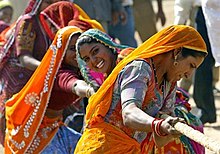

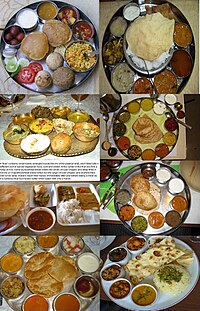
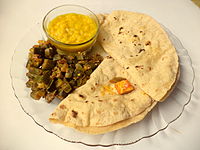


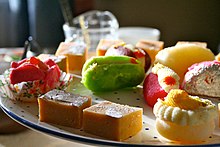
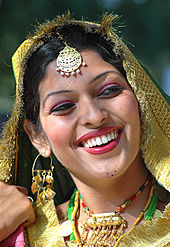
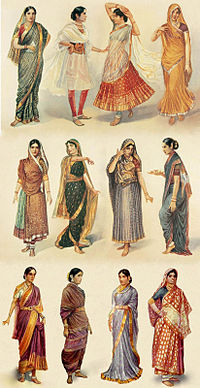
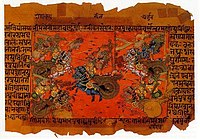
No comments:
Post a Comment